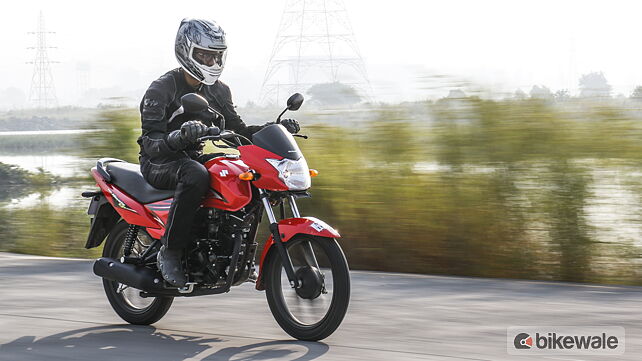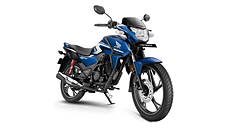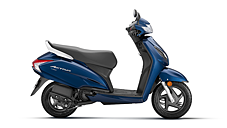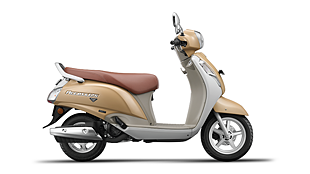What is it?

The Suzuki Hayate was launched in 2012 as a contender in the bustling executive commuter segment, though it failed to capture the customers’ imagination. The 110cc commuter segment is a very hard market space to crack, with buyers preferring to stick to tried and tested options rather than experiment with new brands. With Hero MotoCorp and Honda having cemented their positions, newcomers like Suzuki have had a difficult time in making their presence felt.
Trying a new approach, Suzuki decided to shake up things in its portfolio and modernise all its two-wheelers. One of the products to benefit from this rejig is the Hayate EP. Featuring a new diamond frame and swingarm, revised suspension setup and Suzuki Eco Performance, the Hayate EP promises to be the perfect commuter bike for urban and rural users alike. But will this be enough to take on its rivals? We decided to find out.

How does it ride?

Powering the Hayate EP is a 113cc single-cylinder air-cooled engine with Suzuki Eco Performance (SEP) technology. Horsepower has gone up from 8.3bhp to 8.6bhp, though the bump in torque is more significant. The Hayate EP delivers 9.3Nm of torque at 5000rpm, which is 0.7Nm more and 500rpm sooner than the previous model. This has helped improve its low-end and mid-range performance.
The gear ratios have been configured to get you to the fourth gear as soon as possible. The Hayate EP easily manages to keep going at 20kmph in the fourth gear. The engine feels very smooth and refined up to 60kmph and bearable up to 75kmph. After that, the vibrations serve as a constant reminder that you are aboard a small-capacity commuter bike. On highways you can maintain a steady 70kmph, with enough power in the reserve for the odd overtake.

At 1305mm, the Hayate EP’s wheelbase is 45mm longer than the older bike. Suzuki has also replaced the older bike’s dated tubular swingarm with a rigid box-section unit. The suspension is inherently soft which makes for a very comfortable city ride. The Hayate EP also excels when it comes to the ability to weave in and out of traffic effortlessly at low to mid-range engine speeds. Even on broken roads, the bike glides over bumps effortlessly insulating you from the shocks.
However, the skinny 70/100 profile front and 80/100 profile rear tyres make it obvious that this motorcycle isn’t meant for intense cornering. While the bike is easy to tip into corners, the rear tends to get bouncy over undulations due to the soft rear setup which can hamper your confidence to carry high speeds through corners. The rear springs are five-step preload adjustable, tinkering with which might give you a more composed and confident ride.

My biggest grouse with the Hayate EP is its gearbox. A four-speed transmission with unidirectional shift pattern is common in this segment. An all down pattern isn’t. This gearbox pattern can take a while to get used to, and can be very distressing for the engine when you accidentally downshift when you meant to upshift.
Anything else I should know?

The SEP technology focuses on reducing all kinds of mechanical losses through efficient design of components and changes in manufacturing process. Even the overall weight of the motorcycle has gone down by five kilograms. The result is better fuel efficiency without compromising performance. And the numbers speak for themselves. The Hayate EP returned an impressive 64.6kmpl in the city, which coupled with the 10 litre fuel tank make it a 'fill it, shut it, forget it' motorcycle.

Look at it from the front and you can notice that the design draws influence from the Suzuki Gixxer. Move on to the side profile and all similarities end. The sculpted tank, plastic shrouds and the tail section adopt a very conservative design, with the decals adding a bit excitement. Paint and switchgear quality is top notch. I particularly liked the bright red paint scheme which makes the bike noticeable from a mile away. Apart from this red, the Hayate EP is also offered in grey and black paint schemes.

When it comes to features, the Hayate EP is very basic. The preload adjustable rear suspension and alloy wheels are the only bit of equipment that the Hayate EP can boast of. The analogue clocks, absence of trip meters and position lights and the basic cycle parts make it falter against the competition.

Should I buy one?
The Suzuki Hayate EP’s ride comfort is its biggest strength. The seat, suspension setup and the riding position have all been designed with one focus – to make your commute as comfortable as possible. Even the engine and suspension setup has been fine tuned to suit Indian conditions (both urban and rural), and in these aspects it performs very well. While its moderate character might not suit the taste of the youth, a market for such conservative bikes does exist. So if you want a fuel efficient, no frills, hassle free work horse, the Hayate EP is cut out just for you.
Where does it fit in?

The Suzuki Hayate EP is priced at Rs 58,807 (on-road, Delhi). It is positioned in an extremely competitive segment with well-established rivals like the Honda Dream Yuga, Hero Splendor iSmart 110 and the TVS Victor.

Gear Check

1. Icon Airmada helmet –
Comfortable, aerodynamic, lightweight and a well-ventilated helmet with a wide peripheral vision. Oval headform fit might not suit everyone though. Price -Rs 15,000.
2. Joe Rocket Alter Ego 3.0 jacket–
An extremely versatile all-weather jacket. In this guise, it is being used as a ventilated mesh jacket, though it ships with two more liners - waterproof and thermal. Price –Rs 20,000.
3. Figo riding gloves –
High quality full gauntlet gloves suited for city riding and touring. Extremely comfortable and decent levels of protection. Price -Rs 4,500
4. AGV Sport Airtex pants –
Riding pants with mesh in the crotch, calf, back of legs and thigh areas which is a real boon in our hot weather. Price -Rs 6,500.
5. Sidi B2 boots –
All-round street and sportbike riding shoes also suitable for track days. Not ventilated, which can make it uncomfortable for everyday use. Price - Rs 17,000
Gallery
1/43
Double Tap to Zoom



















![[object Object] ThumbNail Images [object Object] ThumbNail Images](https://imgd.aeplcdn.com/642x361/bw/ec/25491/Suzuki-Hayate-EP-Engine-82486.jpg?v=201711021421&q=80)
![[object Object] ThumbNail Images [object Object] ThumbNail Images](https://imgd.aeplcdn.com/642x361/bw/ec/25491/Suzuki-Hayate-EP-Wheelstyres-82487.jpg?v=201711021421&q=80)
![[object Object] ThumbNail Images [object Object] ThumbNail Images](https://imgd.aeplcdn.com/642x361/bw/ec/25491/Suzuki-Hayate-EP-Tank-82488.jpg?v=201711021421&q=80)
![[object Object] ThumbNail Images [object Object] ThumbNail Images](https://imgd.aeplcdn.com/642x361/bw/ec/25491/Suzuki-Hayate-EP-Seat-82489.jpg?v=201711021421&q=80)
![[object Object] ThumbNail Images [object Object] ThumbNail Images](https://imgd.aeplcdn.com/642x361/bw/ec/25491/Suzuki-Hayate-EP-Gear-lever-82490.jpg?v=201711021421&q=80)
























